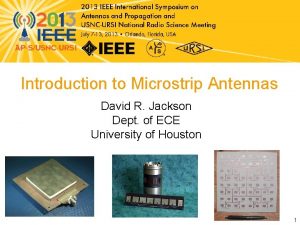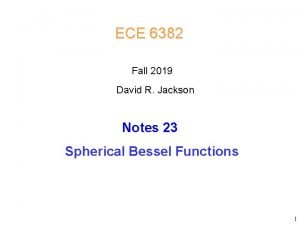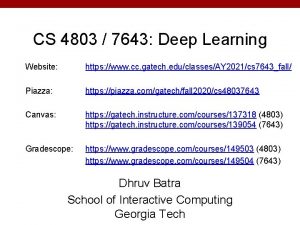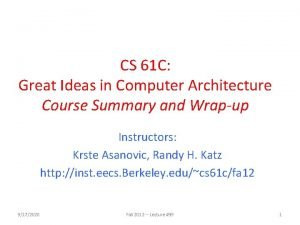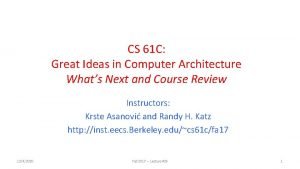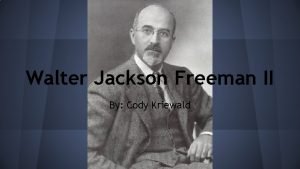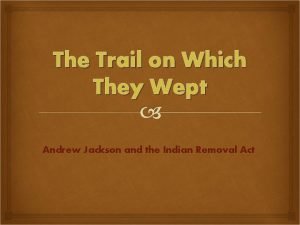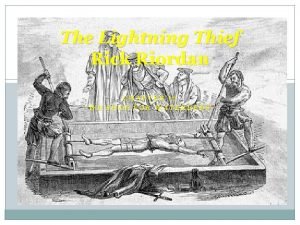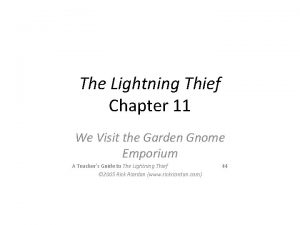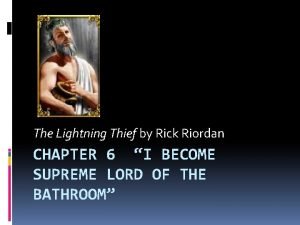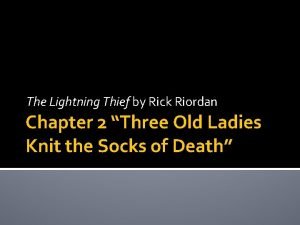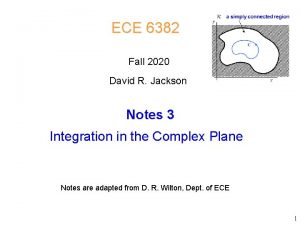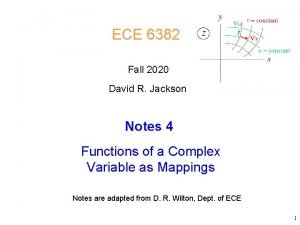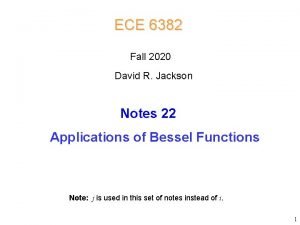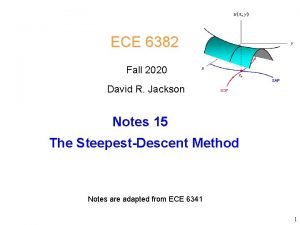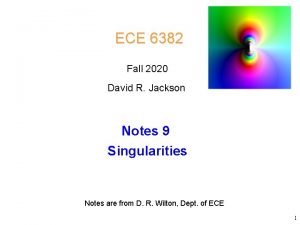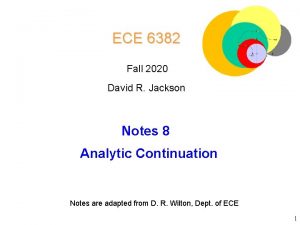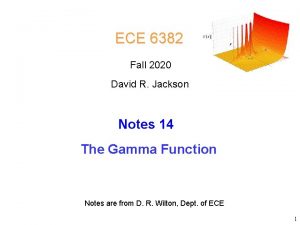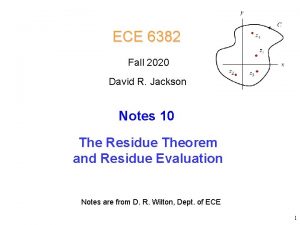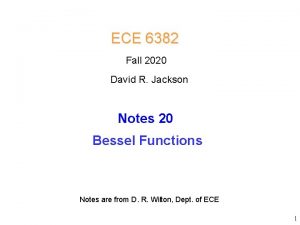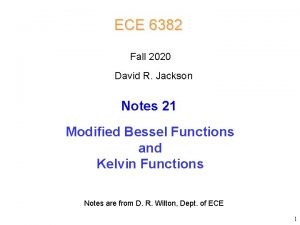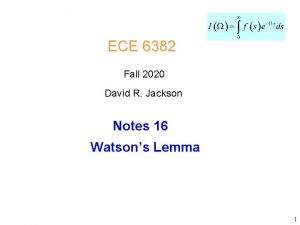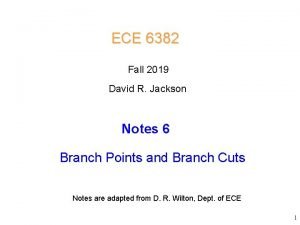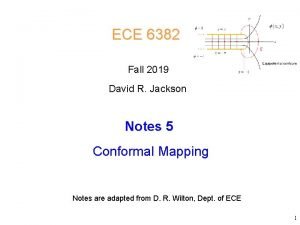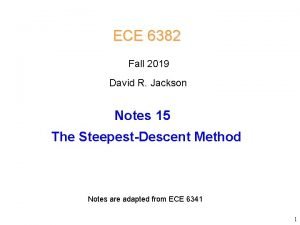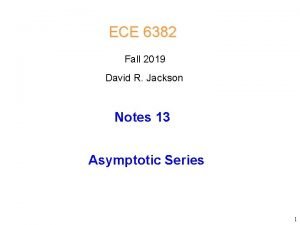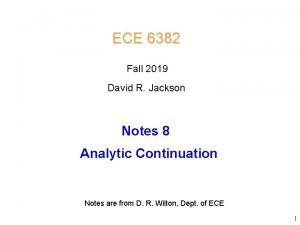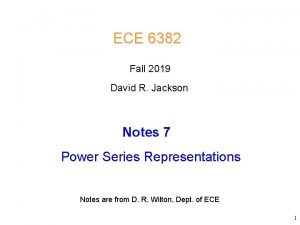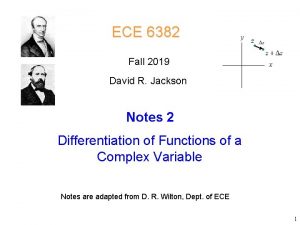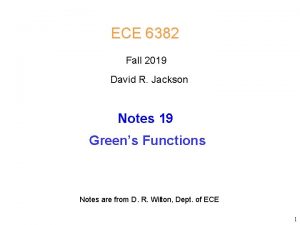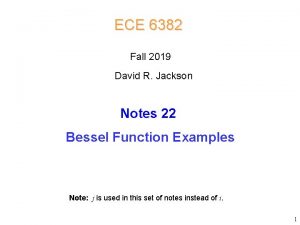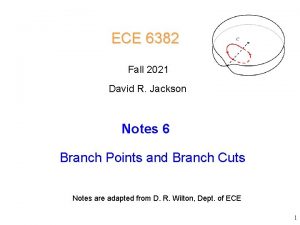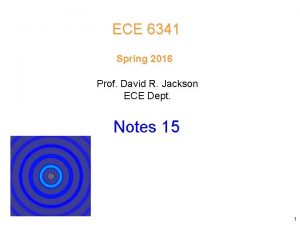ECE 6382 Fall 2020 David R Jackson Notes





























- Slides: 29

ECE 6382 Fall 2020 David R. Jackson Notes 12 Pole and Product Expansions, and Series Summation Notes are from D. R. Wilton, Dept. of ECE 1

Pole Expansion of Meromorphic Functions Mitag-Leffler Theorem Note: An extension would be pairs of poles occurring at increasing distance from the origin. Then Note: Each of the two individual series in the sum may not converge. Note that a pole at the origin is not allowed! (But we can always shift using z z - z 0. Or we can add a term to cancel a pole that appears at the origin. ) Mittag-Leffler 2

Proof of Mittag-Leffler Theorem 3

Proof of Mittag-Leffler Theorem Taking the limit as N , we have (putting over a common denominator) 4

Extended Form of the Mittag-Leffler Theorem Extended Mitag-Leffler Theorem Note: The first p terms are those of a Taylor series. 5

Example: Pole Expansion of cot z 6

Example: Pole Expansion of cot z (cont. ) Figure showing the circles Poles at: Note: In this case it is pairs of poles that are of increasing distance from the origin. In this case N is always even. 7

Example: Pole Expansion of cot z (cont. ) 8

Example: Pole Expansion of cot z (cont. ) It isn’t necessary that the paths CN be circular; see the next slide. 9

Example: Pole Expansion of cot z (cont. ) coth (x) ― 10

Example: Pole Expansion of cot z (cont. ) Hence, we have 11

Other Pole Expansions The Mittag-Leffler theorem generalizes the partial fraction representation of a rational function to meromorphic functions. 12

Infinite Product Expansion of Entire Functions Weierstrass’s Factorization Theorem Weierstrass Then 13

Product Expansion Formula 14

Useful Product Expansions Product expansions generalize the factorization of the numerator and denominator polynomials of a rational function into products of their roots. 15

The Argument Principle First consider the following integral: where (The integer M can be either positive or negative. ) So we have Note: The path C does not have to be a circle. 16

The Argument Principle (cont. ) Ø Next, we consider extending this to an arbitrary function that is analytic inside a region except for poles of finite order. Ø The function may also have zeros. Assume that f (z) has a pole or a zero of order (multiplicity) Mn at z = an. 17

The Argument Principle (cont. ) Therefore 18

The Argument Principle (cont. ) Summary Note: In counting the zeros and poles, we include multiplicities. (For example, at a double zero, we add 2; at a double pole we add -2). Note: We assume that the function only has zeros and poles of finite order, and no other singularities. 19

The Argument Principle (cont. ) Since the integrand is an exact differential, we also have: Note: the argument must change continuously! Hence This is the result from which the “argument principle” gets its name. 20

The Argument Principle (cont. ) Summary of equivalent forms: 21

The Argument Principle (cont. ) Example The path C is a circle centered at (3/2, 0) of radius 1. 22

The Argument Principle (cont. ) The original plot from Mathcad 23

The Argument Principle (cont. ) We add 2 after = . 24

Summation of Series The residue theorem is also frequently used to sum series. Some important results are obtained from integrals I of various functions over the contour C shown below. (illustrated for the first form above) Note: We assume that the integral I over the contour vanishes as it tends to infinity. 25

Summation of Series (cont. ) Example Derive the following result: If I 0 as the path increases, we have 26

Summation of Series (cont. ) Example Hence (factor of 2) 27

Kummer Acceleration Summation formulas are very useful for the acceleration of series by adding and subtracting terms (Kummer acceleration). Example: (slowly converging series) (Kummer acceleration) (rapidly converging series) 28

Kummer Acceleration (cont. ) Numerical illustration of improved convergence 29
 The life and legacy of andrew jackson doodle notes
The life and legacy of andrew jackson doodle notes David r jackson
David r jackson David r. jackson
David r. jackson Cs 7643 deep learning
Cs 7643 deep learning Cs 61
Cs 61 Cs61c fall 2020
Cs61c fall 2020 Wisc
Wisc Michael jackson chest
Michael jackson chest Movie about andrew jackson
Movie about andrew jackson Mbti mc kevin
Mbti mc kevin Albany movement
Albany movement The lottery shirley jackson questions
The lottery shirley jackson questions Walter jackson freeman
Walter jackson freeman General jackson slaying the many headed monster
General jackson slaying the many headed monster Michael jackson psychodynamic
Michael jackson psychodynamic Andrew jackson trail of tears map
Andrew jackson trail of tears map The possibility of evil shirley jackson
The possibility of evil shirley jackson Discussion questions for the lottery
Discussion questions for the lottery Chapter 17 summary percy jackson
Chapter 17 summary percy jackson Describe the chimera in percy jackson
Describe the chimera in percy jackson The lightning thief teacher guide
The lightning thief teacher guide What happens to medusa in chapter 11?
What happens to medusa in chapter 11? The lightning thief chapter 6 summary
The lightning thief chapter 6 summary The lightning thief chapter 2
The lightning thief chapter 2 Mapleson f
Mapleson f Peeples middle school
Peeples middle school Overview of sa/sd methodology
Overview of sa/sd methodology Seven types of ambiguity shirley jackson
Seven types of ambiguity shirley jackson Che guevara john lennon photo
Che guevara john lennon photo Retenedor tipo roach
Retenedor tipo roach

